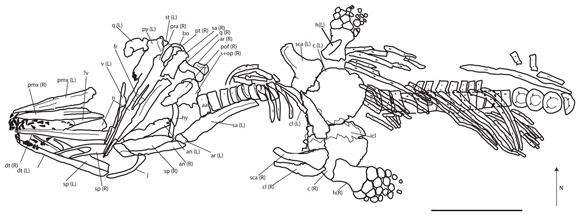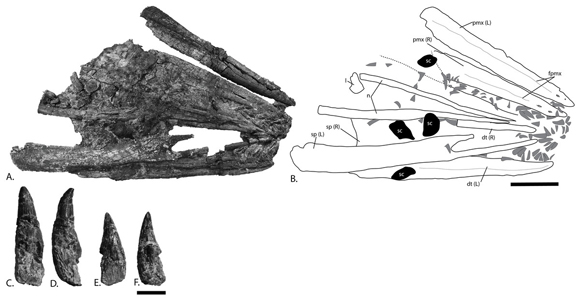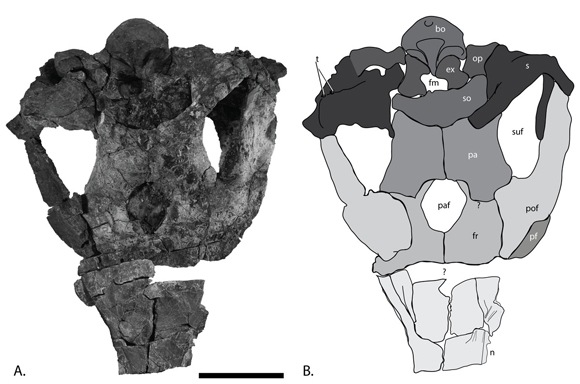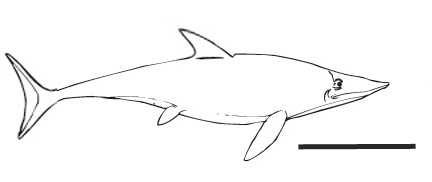Learning More About Palvennia hoybergeti
The Svalbard archipelago located off the coast of northern Norway, has attracted the attention of palaeontologists for several decades. Some of the marine strata exposed on these islands date from the Late Jurassic and Early Cretaceous, the remote location and inaccessibility has not prevented hardy scientists from exploring these deposits and over the years, a huge number of invertebrate and vertebrate fossils have been collected. Writing in the on-line, open access journal “PeerJ”, researchers from the University of Oslo, the London Natural History Museum, the University of Alaska and the University of Alaska Natural History Museum, have described a number of new ichthyosaur specimens that have been excavated from Spitsbergen, the largest island in the group.
Four Ophthalmosaurid Ichthyosaur Specimens
To date, four different types of ophthalmosaurid ichthyosaur are known from these rocks (the Slottsmøya Member of the Agardhfjellet Formation). Several specimens are described in the newly published paper, including a disarticulated but relatively complete fossil of Palvennia hoybergeti. P. hoybergeti is a Late Jurassic ophthalmosaurid marine reptile, that had been described back in 2012, from a single and very incomplete skull. This new specimen (museum number PMO 222.669), has a mostly complete skull and reveals important new information about this short-snouted ichthyosaur species.
A Skeletal Drawing of the New P. hoybergeti Specimen PMO 222.669

Picture credit: PeerJ
A Short-snouted Ichthyosaur
The fossil specimen (PMO 222.669) has provided the researchers with new information on the skull morphology of Palvennia hoybergeti. It has a much reduced snout, superficially similar to the Early Jurassic ichthyosaur Ichthyosaurus breviceps, although the two genera are not closely related and they lived tens of millions of years apart.
The Rostrum and Teeth of Specimen Number PMO 222.669

(A), photograph and (B), interpretation of the rostrum from the surface stratigraphically down. Disarticulated teeth in (C), and (D), different views of the same tooth and (E), and (F), different views of a second tooth. The scale bar (A-B) is 10 cm, whilst the scale bar (C-F) is 1 cm.
Picture credit: PeerJ
The relatively robust, short snout (rostrum) and the broad teeth may represent adaptations to feeding on other types of prey compared to other members of the Thunnosauria clade. It could be speculated that Palvennia hoybergeti may have been less of a specialist cephalopod or fish hunter, perhaps preying on larger animals such as other ichthyosaurs.
A View of the Top of the Skull of the Newly Described Palvennia hoybergeti Specimen

Picture credit: PeerJ
Confusing Pectoral Girdles
The researchers conclude that the more complete specimen that they have described greatly adds to our knowledge of this taxon. Furthermore, two additional, newly discovered ophthalmosaurid specimens with pectoral girdles were also described in the paper. The shape of the bones in the pectoral girdle, (the shoulders and associated bones for attaching the forelimbs), had thought to be quite useful diagnostic tools when assessing these types of ichthyosaur. However, although the shape of the coracoids may provide some guidance as to taxonomy, the scientists noted that the fossils from the Slottsmøya Member show a degree of individual variation which might compound the issue of identifying unique anatomical characteristics to help define a genus.
An Illustration of the Ophthalmosaurid Palvennia hoybergeti

Picture credit: Everything Dinosaur
For models and replicas of marine reptiles and other prehistoric animals: PNSO Age of Dinosaurs Models.
A Substantial Temporal Range
The ichthyosaur specimens from Spitsbergen span quite a substantial temporal range. Fossils of these marine reptiles have been found in strata dating from the Early Tithonian of the Late Jurassic, whilst some specimens have been located in Early Berriasian deposits (Early Cretaceous).
It is proposed that future studies should aim to include a large number of specimens and use quantitative approaches to reveal phylogenetic and evolutionary patterns. As the temporal range of these fossils covers some six million years (around 150 million years ago to 144 million years ago), the fossils from this part of the Svalbard archipelago may prove valuable in helping to determine the evolution of the Ichthyosauria at a time when a number of ecosystems were suffering from extinction events.
The scientific paper: “A New Specimen of Palvennia hoybergeti: Implications for Cranial and Pectoral Girdle Anatomy in Ophthalmosaurid Ichthyosaurs” by Lene Liebe Delsett, Patrick Scott Druckenmiller, Aubrey Jane Roberts, Jørn Harald Hurum and published in PeerJ.
Visit the Everything Dinosaur website: Everything Dinosaur.






Leave A Comment